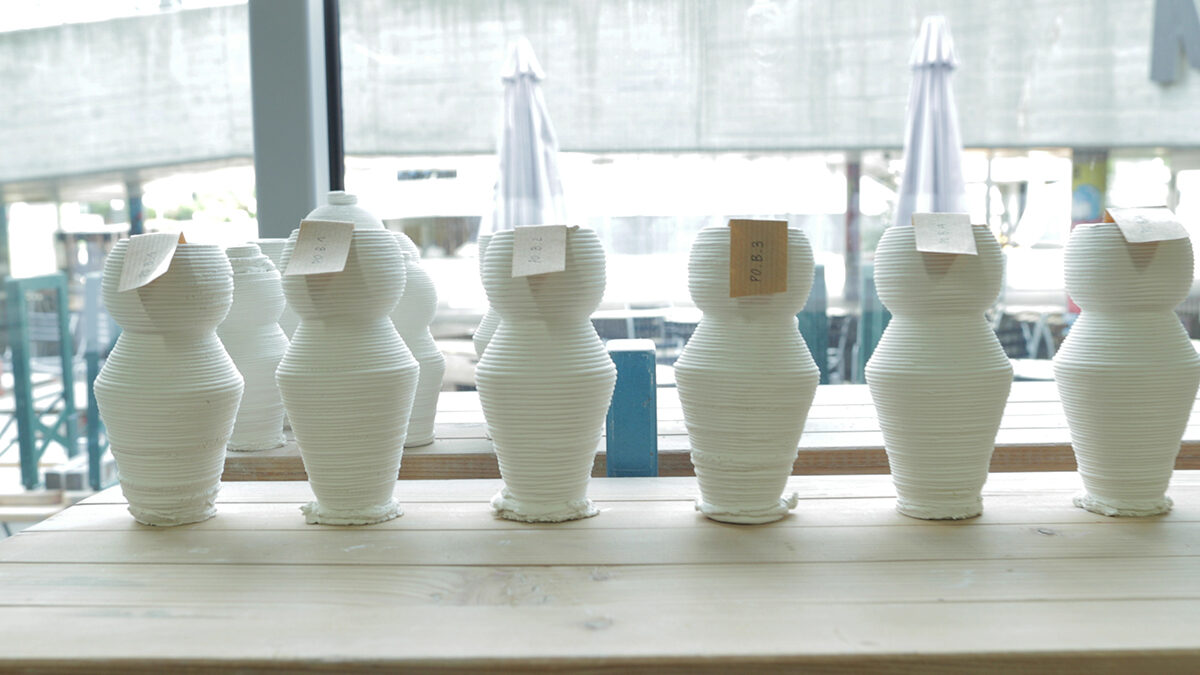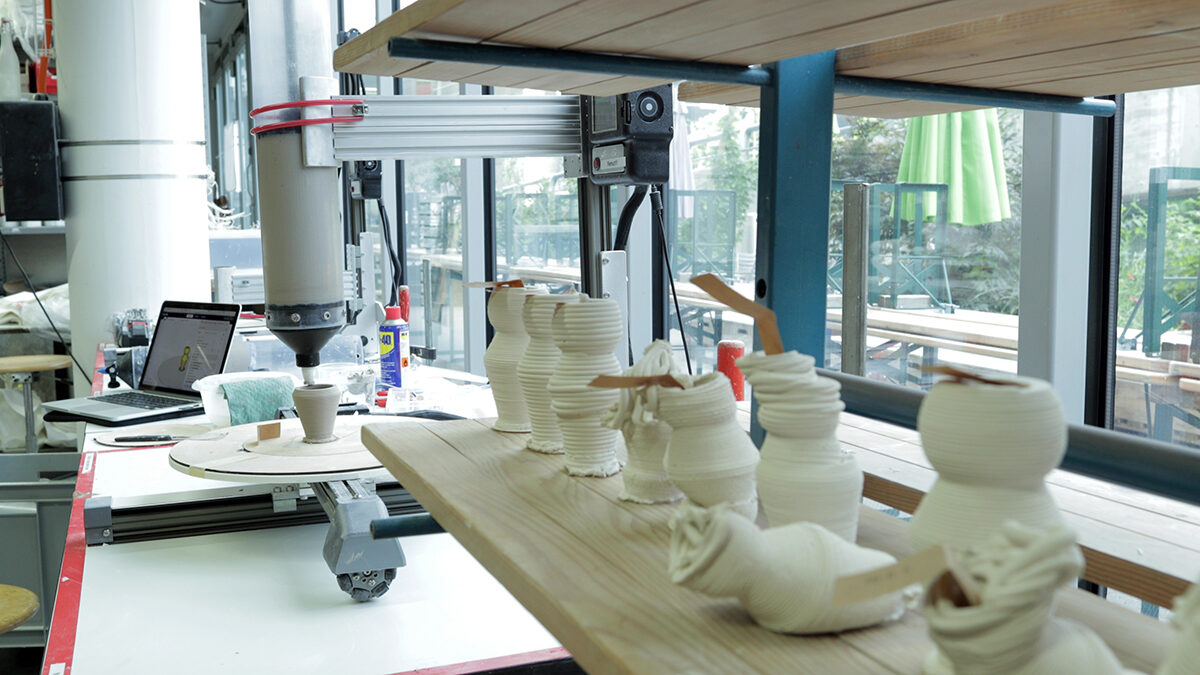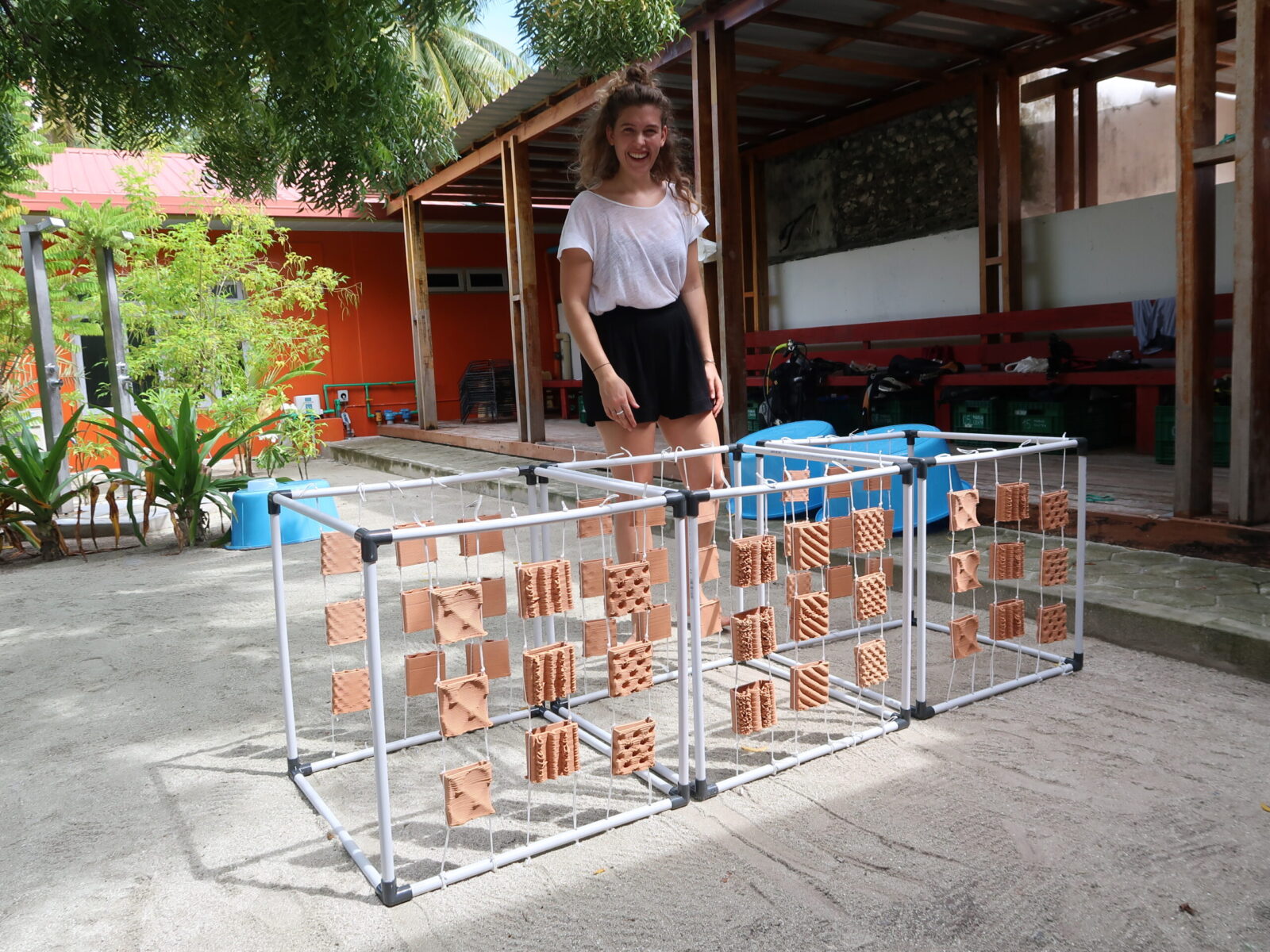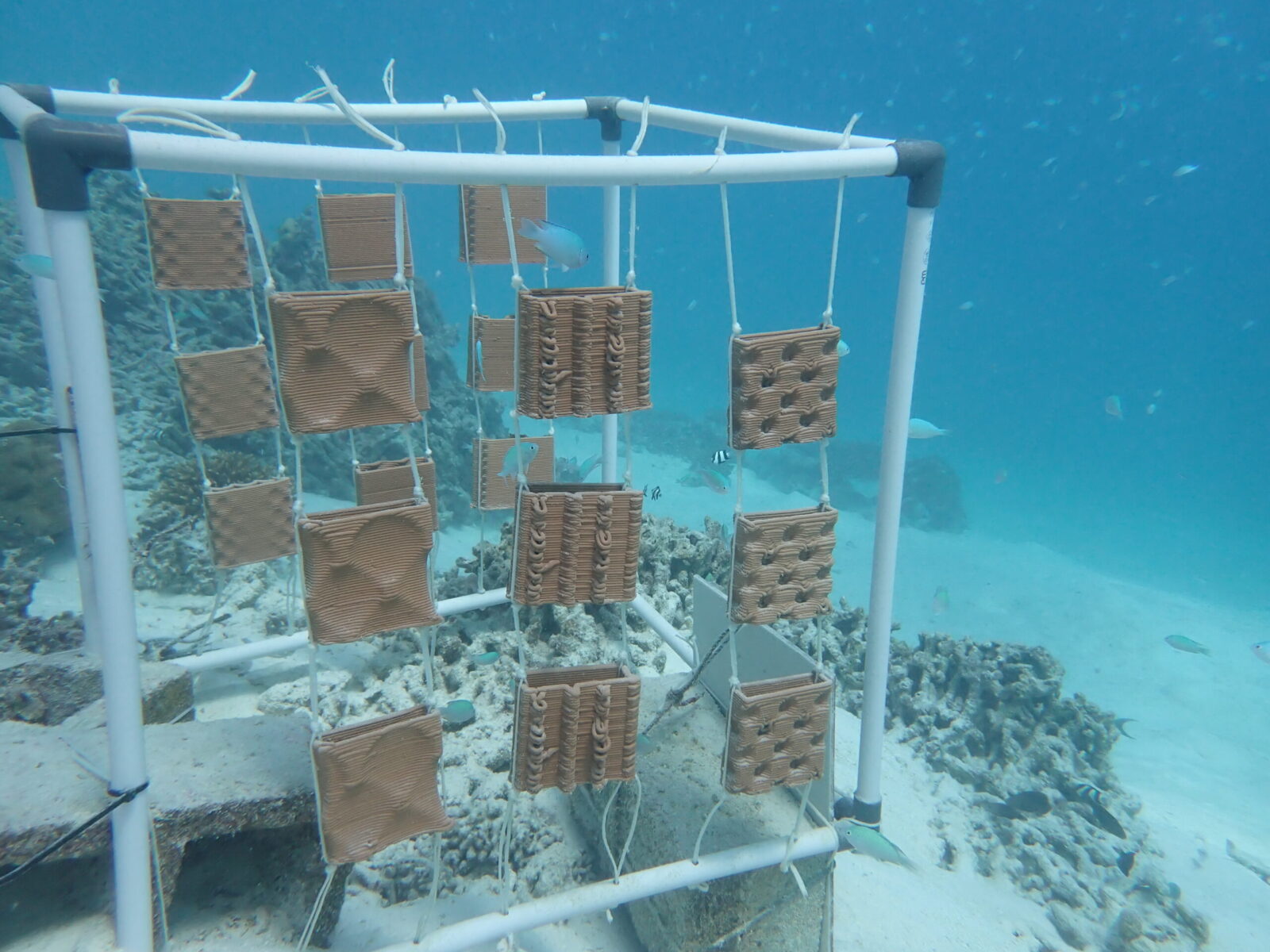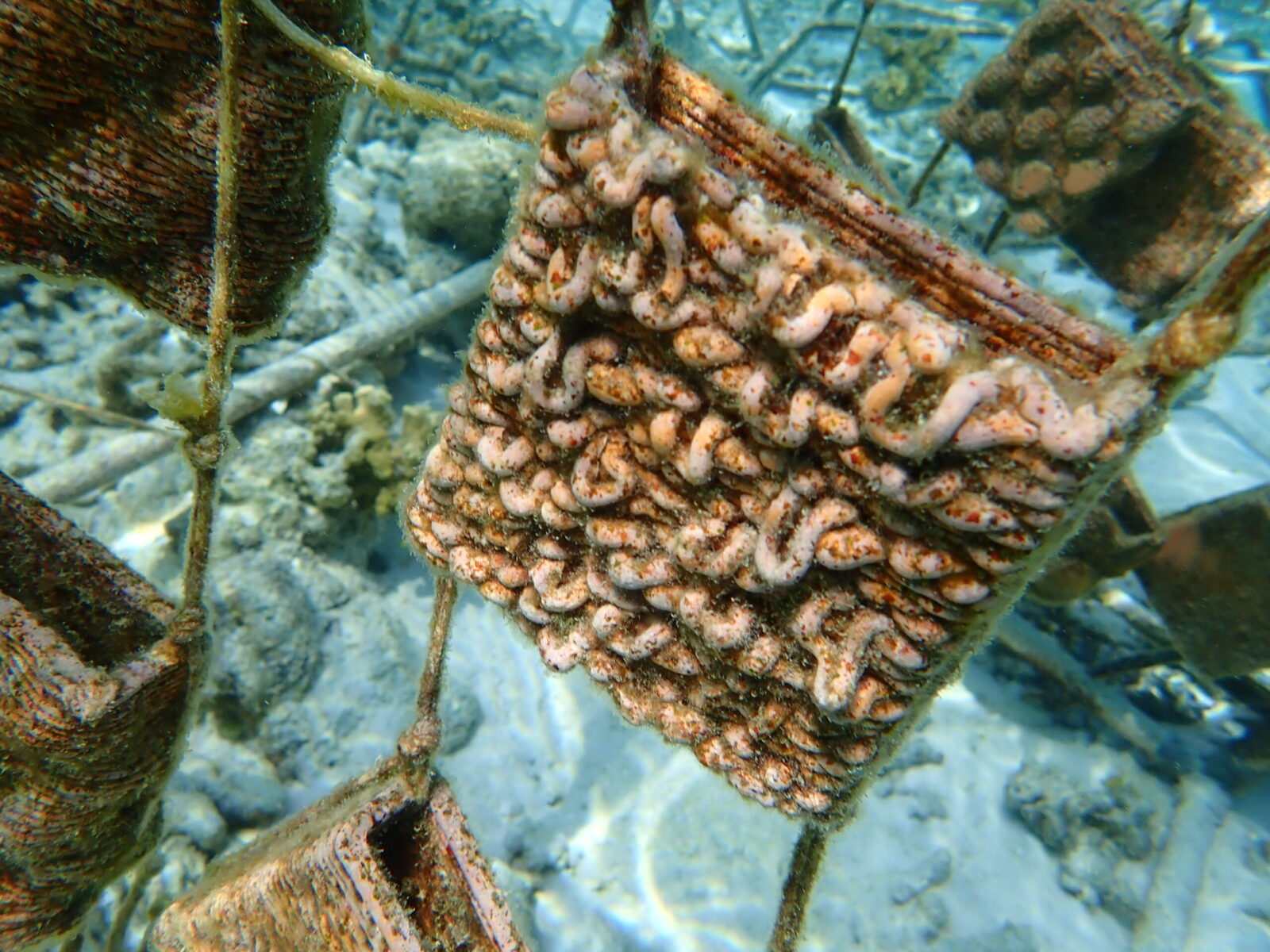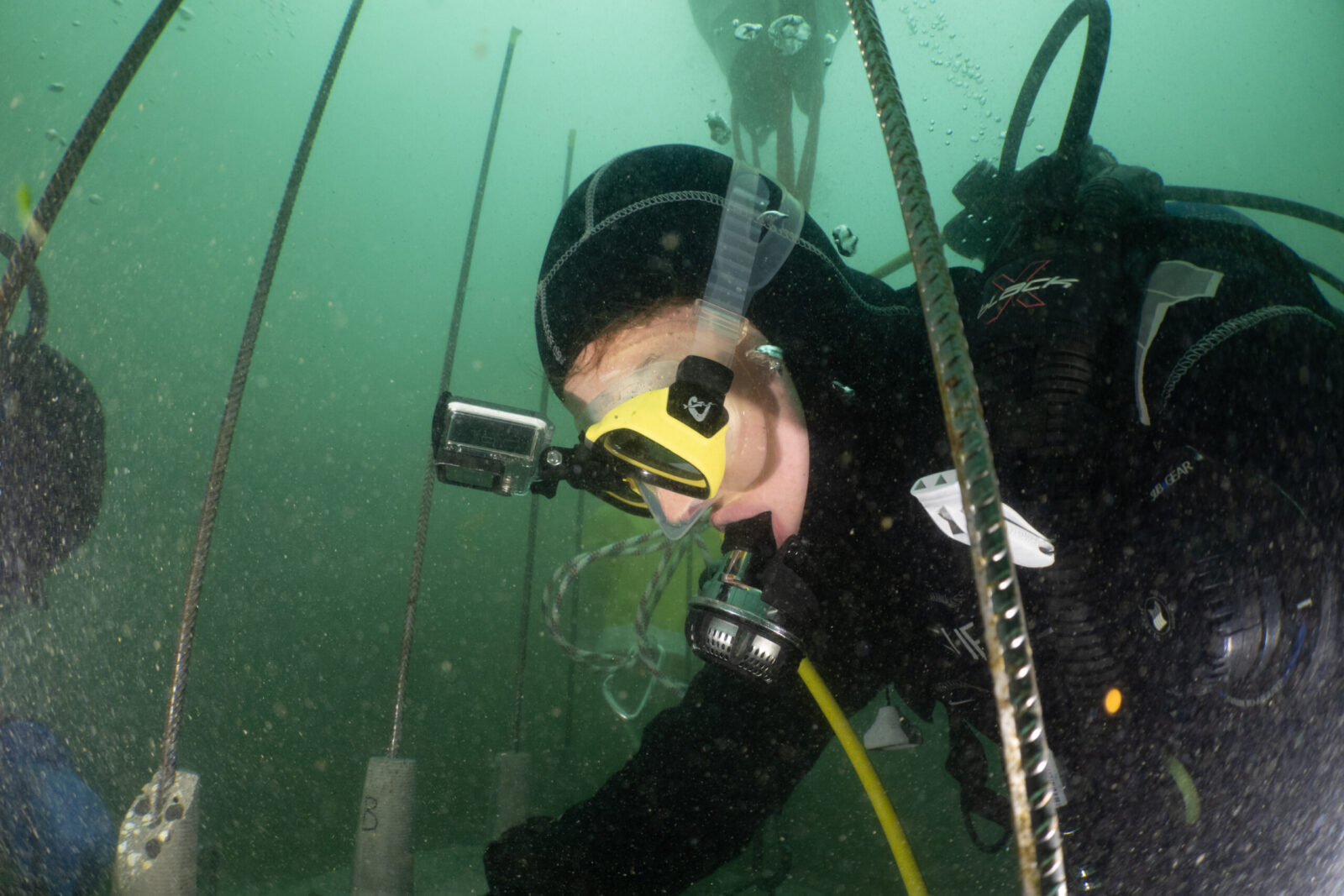Protecting coral reefs
Art and science pursuing a common objective
How everything began
Every profession has its own unique perspective on the world. As an artist, I tend to observe a great deal, both in the figurative and the literal sense. I try to capture the essence of everything around me. This artistic perspective is often understood as a search for aesthetic significance and composition; the pursuit of the poetry of things, so to speak. But I believe that art can do so much more. It can be a catalyst for individual action and societal change. It achieves this by creating artefacts that serve as anchor points for communication and action for people from extremely diverse backgrounds. In this way, art and the natural sciences have a symbiotic relationship. This story details my personal experiences. From an early age, I have been fascinated and inspired by an environment that is often alien to us humans – namely: the “underwater world”.
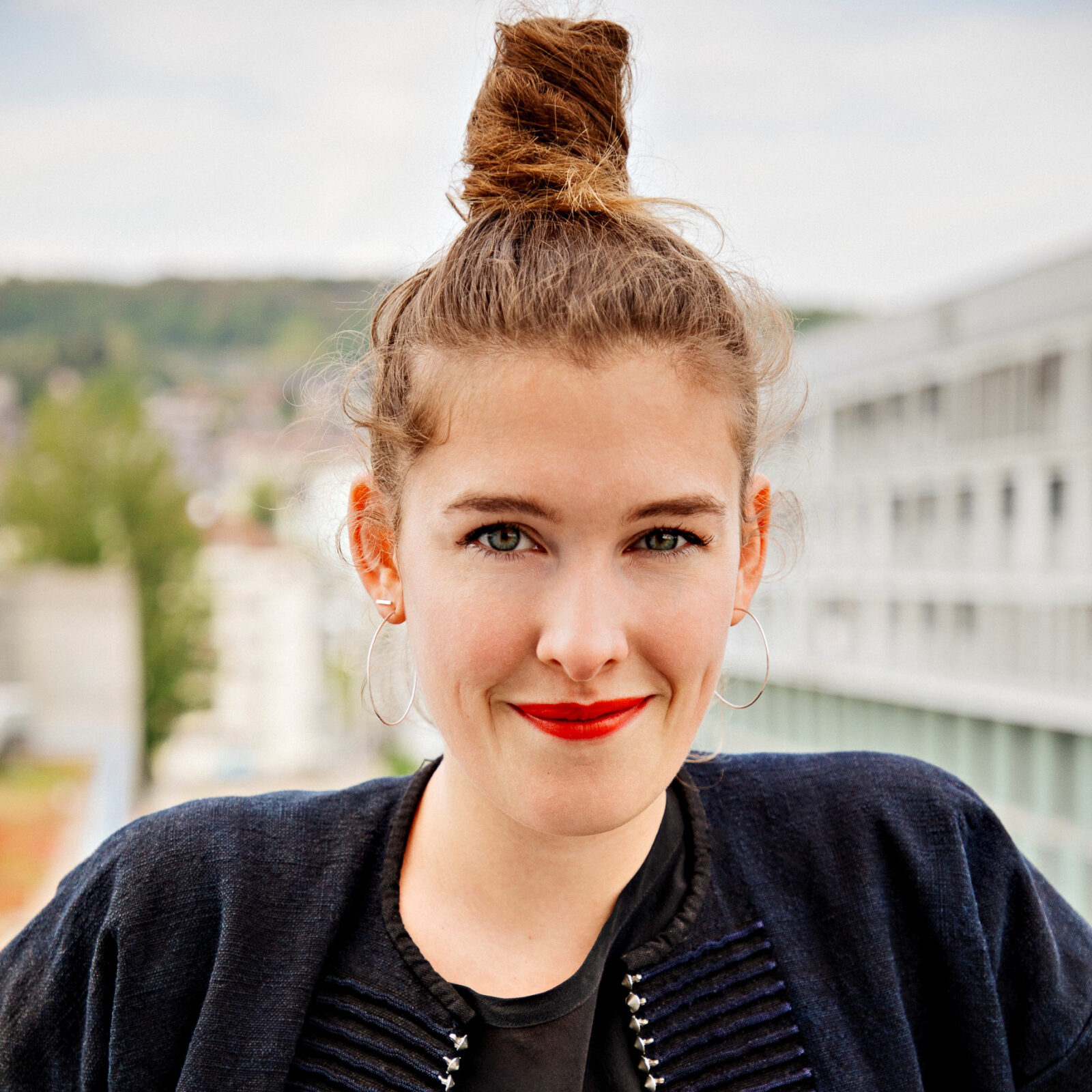
It all started in the year 2000 when I discovered diving. What an indescribable feeling, being able to coexist in this surreal environment, if only briefly. A passion was born. In my work, I began to explore the topic of aquatic ecology in a variety of different bodies of water. In 2012, I had an experience that profoundly affected me. I was in the Seychelles to get certified as a divemaster 1 . I had been to this place before, but now I hardly recognised it. The coral reef looked dreary. A bleaching event in 2011 had transformed this ecosystem, which was once so colourful and abundant, into a lifeless reef. A feeling of powerlessness against the contempt for submarine ecosystems began to well up inside of me. I decided to learn as much as I could about how to protect coral reefs. I wanted to use this knowledge to create impactful works of art. I felt there had to be a way to use art to prevent the extinction of coral reefs, which scientists predict will occur before the year 2050.
Working together with marine biologists who specialise in researching coral genomes was extremely rewarding. I learned a great deal from these scientists during my time at the Reef Genomics Lab, which is part of the Red Sea Research Center at the King Abdullah University of Science and Technology in Saudi Arabia. Based on this experience, I have been developing strategies and prototypes for my project “Beneath the Sea, a New Form of Reef”, which is inspired by submarine ecosystems, since 2016. My time at swissnex San Francisco as a Pier 17 Science Studio Fellow in 2018 was particularly formative. My work is based on the form and structural functions of a reef. It creates an innovative “architecture” that invites corals on the ocean floor to settle and grow there. The goal is to offer a habitat and protection for the vital marine communities that make their homes in coral reefs. One core aspect of this project is sustainability in terms of the materials used and the manufacturing processes. Throughout my discussions with researchers from various international laboratories and institutions, one thing became increasingly clear to me: I wanted to expand my earlier, totally manual approach and start to integrate digital manufacturing methods into my work.

I became an Innovator Fellow at ETH Library Lab in 2019. The lab is an interdisciplinary initiative. Its goal is to advance innovative approaches to support open knowledge ecosystems in the areas of science and research. With the support of the lab, I was able to devote myself to learning about digital production methods, further refine my project aims, and network with ETH Zurich researchers. It was a fascinating journey. The result? An innovative prototype. It is a combination of the logic of digital manufacturing methods, the characteristics of ecological materials, and the influence of the flow of water on the settlement of coral larvae. I will offer insights into the project in the following chapters. Next, I will discuss the steps involved in transitioning from manual work to technical implementation.
Sustainability and scalability
In episode one, Marie Griesmar reported on the idea behind her project “Beneath the Sea – A New Form of Reef” and the development process. In episode two, she talks about putting her ideas into practice.
Ideally, an eco-responsible project should regard all components of the natural environment as intrinsically related. This rather ethical view defines the overall process – not only in terms of its development, but also its fabrication approach and implementation. I have followed the guiding principles of respecting nature and including social aspects of local communities in every artistic and interdisciplinary project I have undertaken. This also includes attempting to utilise local resources or biomasses such as clay, natural pigments and plant-based materials.
My rehabilitation project for coral reefs, “Beneath the Sea”, deals with complex environmental requirements, especially since it means intervening in aquatic habitats, where the balance between organisms is very delicate. When working on installations underwater, my biggest concern is somehow misusing materials or technology. To avoid disturbing or damaging an ecosystem, I decided to observe the work of marine biologists. The goal was to identify what kind of natural materials would be most likely to fit the artistic structures I had in mind. I wanted to find out which ones would be most likely to become part of the marinescape as the years progressed.
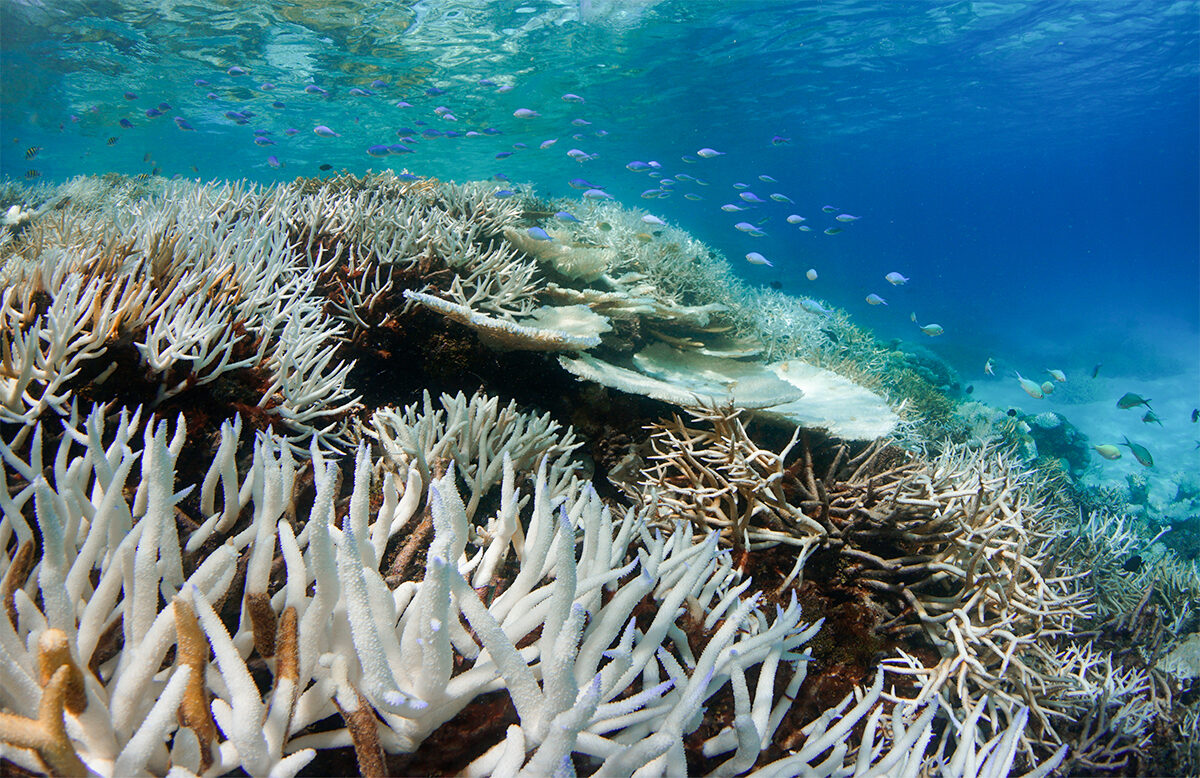
Earthenware, especially burnt clay, provides an ideal substrate for coral to settle on and grow thanks to its porous texture and alkalinity. Knowing the benefits its properties offered, I started to develop underwater works of art for coral made of clay. I crafted my first sculptures by hand. However, I was also aware of the fact that the loss of three-dimensional structure among coral reefs is a worldwide problem, and that even with all my will and energy, my hands alone would never be productive enough to make a significant impact. That was when I started thinking about scaling up by using a more technical manufacturing approach, namely 3D printing.
However, it was difficult to know where to start, since I had no prior knowledge in this field. By sheer coincidence, I came across the ETH Library Lab, an initiative of the ETH Library striving to develop scientific information services and infrastructure. Once I had been accepted on its Innovator Fellowship programme in April 2019, a whole new learning journey began for me. With the support of the ETH Library Lab, I was able to receive scientific supervision for my project from the Gramazio Kohler Research Group, which specialises in conducting research on digital fabrication and is at the forefront of identifying new fabrication methods that could also increase sustainability.
In addition, the aim of my project convinced Swiss family-owned enterprise Bodmer Ton to support it. The company specialises in extracting and manufacturing local clay and is one of the many hidden champions here in Switzerland. They generously donated one tonne of clay from the region of Einsiedeln, which made it possible for me to stick to the principle of only working with local, sustainable material.


At the same time, I had the opportunity to learn more about scientific workflows in digital fabrication thanks to the expert advice of the researchers at Gramazio Kohler Research. However, these were also challenging times, since I was learning on all fronts, trying to master new vocabulary, new hardware, new software and new design principles. But my keen interest in combining digital manufacturing processes with using ecologically sustainable material kept pushing me forward, and saw me take my next steps in prototyping suitable and appropriate structures for coral reef restoration.
Challenges and interdisciplinary collaboration
In the third episode, Marie reports on the technical options, implementation approaches and interdisciplinary collaboration involved in realising such a complex project.
Jumping into the unknown was a huge challenge for me. On the one hand, it allowed me to understand different views of the world by seeing them through the lenses of various scientific disciplines. This process can be very intimidating, especially because it makes you realise how little you actually know. On the other hand, my perspective changed as I became familiar with the logic of digital fabrication processes. The logic of these processes is largely determined by the hardware and software used and adds another significant layer of complexity.
In order to avoid getting lost, I made sure to focus on the three goals I set for my project at ETH Library Lab:
- The first goal was to master one type of clay extrusion-based printing.
- The second goal was to use the principles of digital fabrication to develop my conceptual understanding of artificial coral reefs.
- And the third goal was to produce tangible prototypes that could be tested underwater.
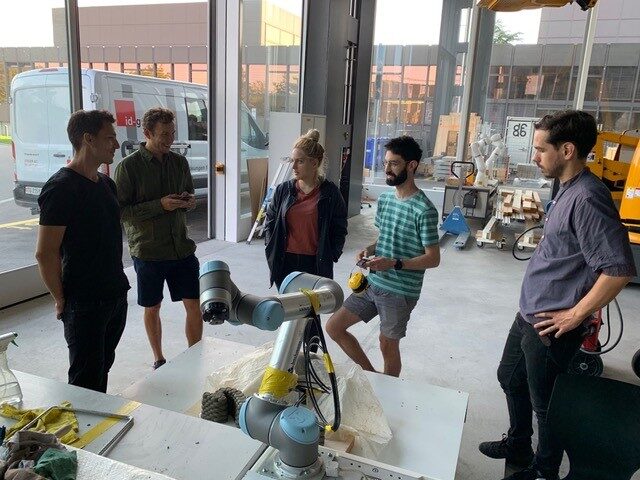
From the left to the right: Mathias Bernhard, David Jenny, Eleni Skevaki, Nicolas Feihl, Jesús Medina
To achieve the first goal, I needed to find an environment where I could practise and get my first hands-on experience using clay for 3D printing. Because of the ETH Library Lab’s strong commitment to the principles of open access as part of their projects, it was also clear to me that I wanted to share the data and information I obtained from this learning process. To do so, I worked with the Material Archive network, or more precisely, Zurich University of the Arts (ZHdK), a member of the network 2 . ZHdK and the other organisations in the network are home to the Material Archive, for which I produced a collection of clay extrusion-based printing studies.

Through these studies, I was able to showcase how different parameters and settings influenced the outcome of the printing process. While testing the capacities and limits of this manufacturing approach, I also documented this process for future users of clay 3D printing.
In the second phase, I had the chance to be supervised by and work with researchers from different disciplines. In April 2019, the Gramazio Kohler Research group supported me on my learning journey by regularly offering me advice on software applications and providing me with a workspace in their department. Later that year, in July 2019, I had the opportunity to become a collaborative tutor for a Master’s project as part of the Master of Advanced Studies ETH in Architecture and Digital Fabrication at ETH Zurich. Together with a marine biologist, engineers in environmental fluid mechanics and architects specialised in robotic and computational design, we helped two students develop a sustainable method for engineering artificial reefs. The project was called “Computational Clay Coral Cities” (see also the article “Beneath the Sea – a Multidisciplinary Journey. Part 3: Collaboration”) and the digital fabrication method used was rapid clay formation 3 . This intense and insightful learning experience made me even more aware of two aspects that would prove to be crucial for the future success of my own project: the importance of surface structure for coral larvae settlement and the feasibility of the overall fabrication process.
After an intensive five months, I finally felt ready to define my own fabrication logic. I opted for an extrusion-based additive manufacturing approach, which is less complex in terms of its technical implementation than rapid clay formation. However, it still took me about three months to produce a tangible prototype. For the aspects that required advanced software programming skills, I collaborated with Jonas Ward Van den Bulcke, a graduate of the Master of Advanced Studies ETH programme in Architecture and Digital Fabrication.
Our exchanges and experiments finally resulted in a robust and modular clay brick structure. The prototype bricks were produced with different surface textures. During subsequent underwater testing, this would allow us to answer a crucial question: Which overall design makes the best basic structure for artificial reefs?
Design, test, iterate
In the fourth episode, I will provide insight into how we tested the prototypes, what I experienced underwater and what I learned throughout the project.
There is no other way to find out whether your prototype design functions as you imagined it than by testing it. Ideally, the more refined your prototype is, the closer to real-life conditions the test setting should be. At a very early stage of my project, testing was in large part about just expressing my idea and vision in conversations with experts from relevant fields. Their remarks and opinions allowed me to identify aspects I myself had not thought about.
The next step was creating the first tangible results in the form of physical objects with – by today’s standards – rather simple geometries. By showing these to other people, I gained more concrete insights into additional functions offered by crafted clay objects. For example, one of the findings was that the structure could not only serve as a substrate for coral to grow upon, but could also deliver formations in which fish could hide. Additionally, putting the first test objects underwater – as I had done during my residency at the KAUST university – showed me the power of underwater currents that tended to bury the shapes under sand or damage them by tearing them away.
Entering the test phase during my fellowship at ETH Library Lab, I specifically looked at surface structures. Through collaboration with ETH marine biologist Ulrike Pfreundt, I had come to understand the importance and characteristics of microscale patterns and roughness that could be added to the surface of my modular units. Which ones would offer the best possible grip for coral larvae to settle on? In order to find this out, there was a first test row under lab conditions supported by researchers from the ETH Chair of Environmental Fluid Mechanics. In the flume, we put different prototype tiles underwater and simulated trajectories of coral larvae by means of 3D particle tracking velocimetry. This provided the first indication of which surface structures would be most suitable.
And finally, we tested under real-life conditions. For this, I was able to receive valuable support from experts in building coral nurseries for reef restoration. Scientists from the Marine Research and High Education (MaRHE) Center adjunct to the Università degli Studi di Milano-Bicocca offered me the opportunity to initiate a field study while attending a coral restoration workshop. The MaRHE Center is located on the Maldives and operates in collaboration with the Maldivian Ministry of Fisheries. Its goal is to provide education on how to protect marine ecosystems and their biodiversity.
On 8 December, the MaRHE Center welcomed me and 100 prototyped clay tiles. The next two weeks were full of hard work. During the days, I had learned how to build nurseries for corals. At night, I applied what I learned to my project and mounted frames to position the clay prototypes. There was not much time to sleep. However, I did all this together with Ulrike Pfreundt, who also attended the workshop. This teamwork was extremely motivating. Since then, we decided to combine our efforts to protect and save coral reefs by establishing our own non-profit organisation.
Furthermore, the MaRHE scientists taught me where and how to best position the frames underwater in order to gain relevant observations. They also agreed to test under different conditions, including different water depths, current strengths and directions and proximity to the coastline. And then, finally, with their help, I installed all those frames underwater. I personally love doing this work, as you have to control not only your scuba-diving skills, but also apply manual work techniques in an oscillating environment.
In the next weeks and months, the frames with the prototypes were observed and settlements were documented. Just one month later, the development of crustose coralline algae (CCA) was observed, a healthy biofilm that is crucial for larvae settlement.
And I was able to finalise my prototype into a minimal viable product: a clay Lego-like system that is easier to produce, transport and implement on-site. Some of these prototypes were integrated into the Material Archive of ZHdK and the ETH Materials Hub as reference objects and can be viewed there.
Why does this journey matter for scientific libraries?
In the fifth and final episode, I talk about the relevance of my project for academic libraries.
If you followed the four previous episodes, you might have noticed that my project was facilitated within a somewhat unexpected context: a library. Commonly, libraries are regarded as quiet and institutionalised spaces that are mainly about access to knowledge. And yes, a scientific library was also the primary provider for validated knowledge during my project.
However, when I began to experiment with processing raw materials and apply hands-on techniques, such as using 3D printers, a traditional library space was certainly not the place to do this. And when I started to connect scientific information from different domains in order to build new applied knowledge on how to tackle “my” specific problem, there was hardly any infrastructure that could capture this knowledge and make it accessible to collaborators across disciplines.
But what if a library could help override these barriers between technology, space and expertise? What if libraries functioned as facilitators and infrastructural sustainers of novel ways of knowledge transfer spanning the elements of digital, physical and social learning? The ETH Library Lab, with its focus on advancing the foundations of our knowledge society, is not like any other programme. It trusted my project Beneath the Sea to serve as a showcase for current information barriers in interdisciplinary research and new infrastructural demands of technology-driven and application-orientated scientific practice. I felt challenged and motivated to be part of this, especially coming from an artistic background.
The ETH Library Lab provided me with the opportunity to explore how the goal to build an artificial reef and digital fabrication methods could be combined. It gave me a unique chance to actively participate in learning processes, which would not exist in written form. This context also pushed me to develop a holistic understanding of clay 3D printing, made me part of an interdisciplinary project related to digital fabrication, and allowed me to prototype, test and implement my own work with scientific rigor.
It was a fantastic and rare opportunity, and I truly enjoyed being part of this innovative environment, which encourages the Innovator Fellows to push their own boundaries, build purposeful solutions and establish bridges between institutions.
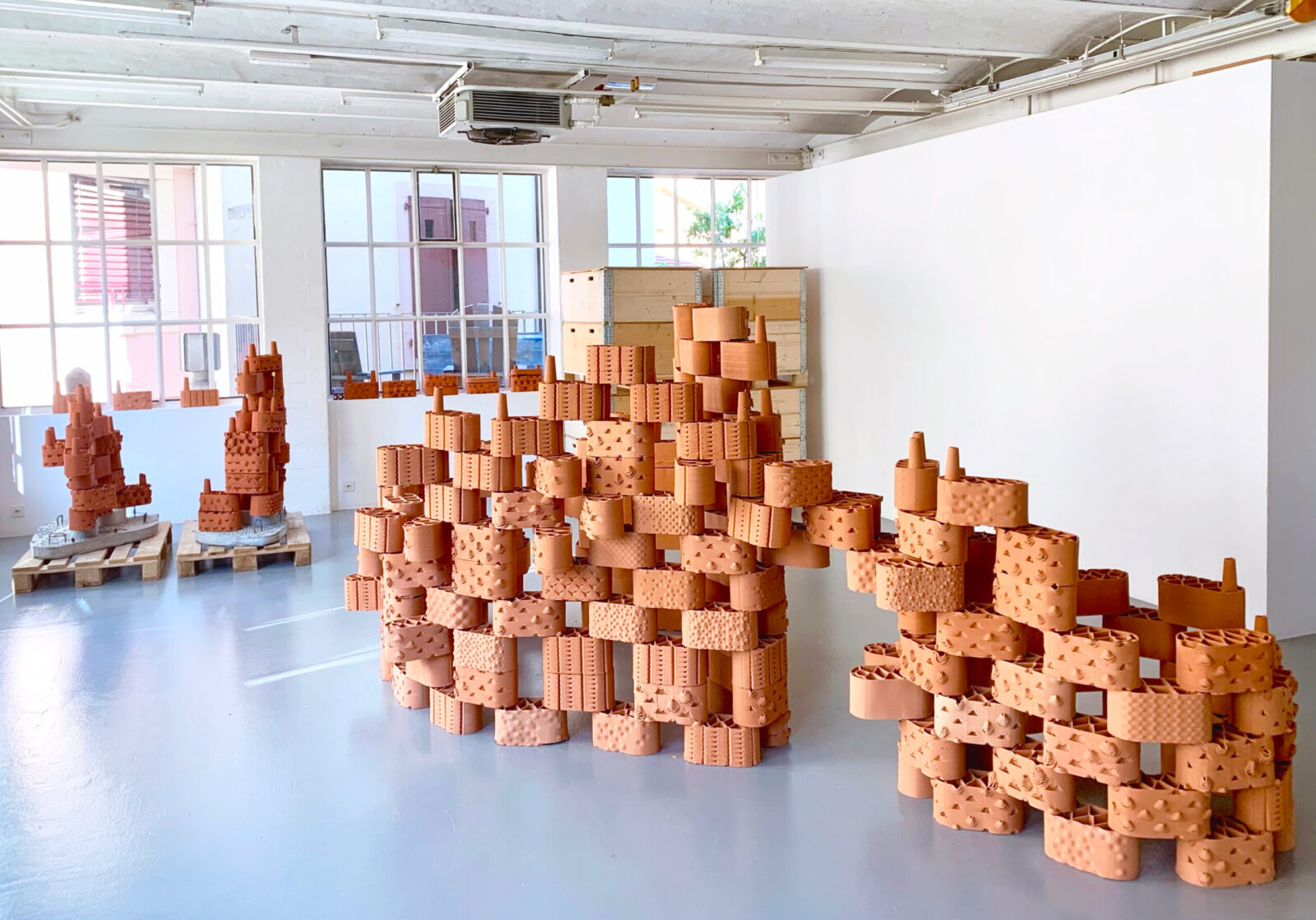
And because of all this, my time at the ETH Library Lab was not only inspiring, but also very fruitful. From Beneath the Sea emerged rrreefs, an association I co-founded with the marine biologist Dr Ulrike Pfreundt. If you visit our website, you will notice that Jonas Ward Van den Bulcke, who helped with programming the developed brick system, is still collaborating with us. The goal is to further optimise the brick system and make it accessible around the world. And my studio is located just two minutes away from the ETH Library Lab, where I’m still printing bricks with different patterns to create adaptive homes for corals and marine organisms. Even if I’m no longer part of the Lab anymore, the time spent there still influences my way of working, learning and integrating new knowledge.
I invite you to keep following our activities through other platforms, such as exhibitions (Gewerbemuseum Winterthur, CAN Centre d’art Neuchâtel), our rrreefs website or Instagram account.
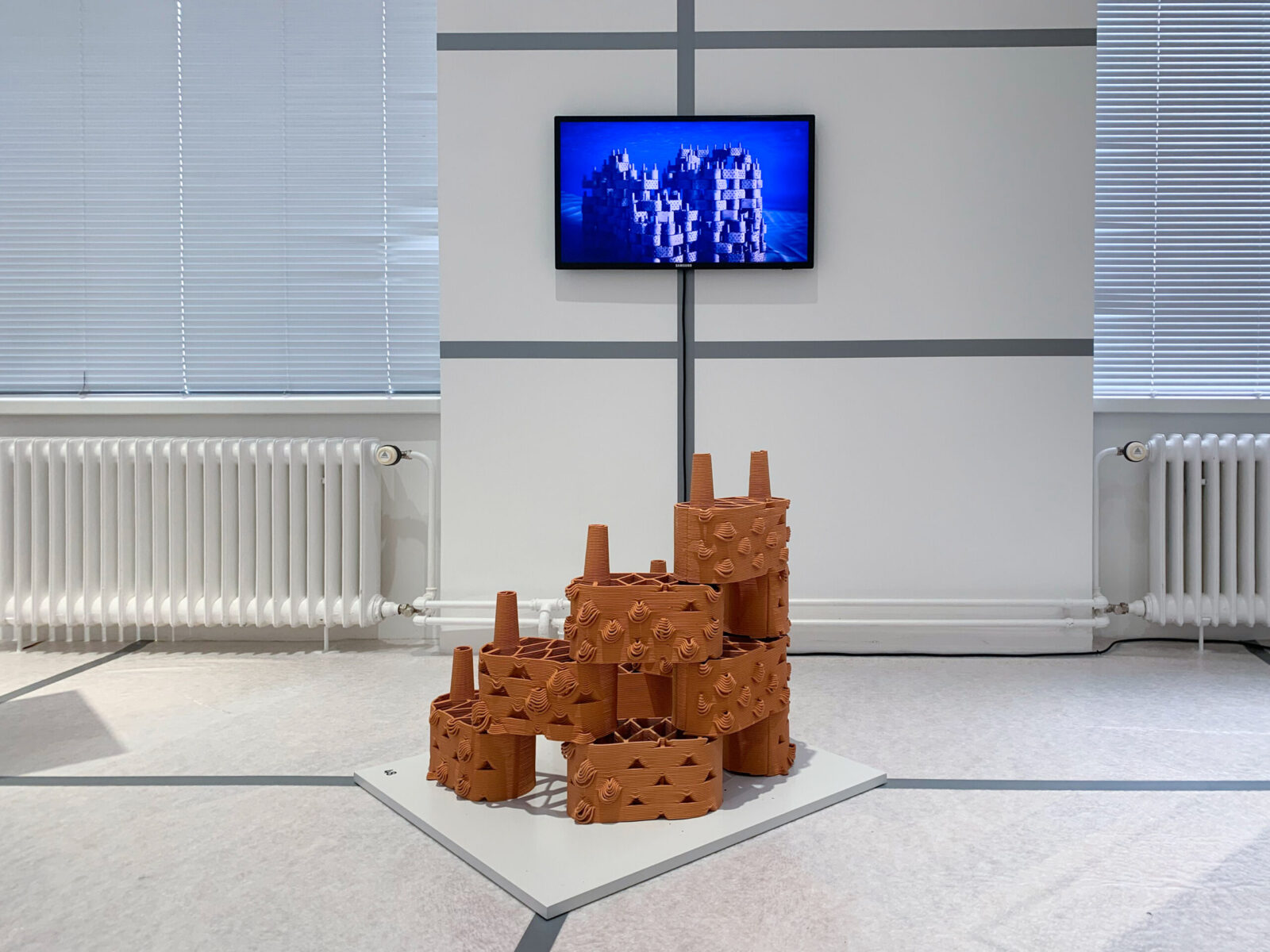
There, you will find insights into how we continue our journey to rebuild endangered coral reefs and create a brick printing community. Moreover, you will receive regular updates on collaborative projects, such as how baby corals grow on the small tiles in the Maldives at the MaRHE Center.
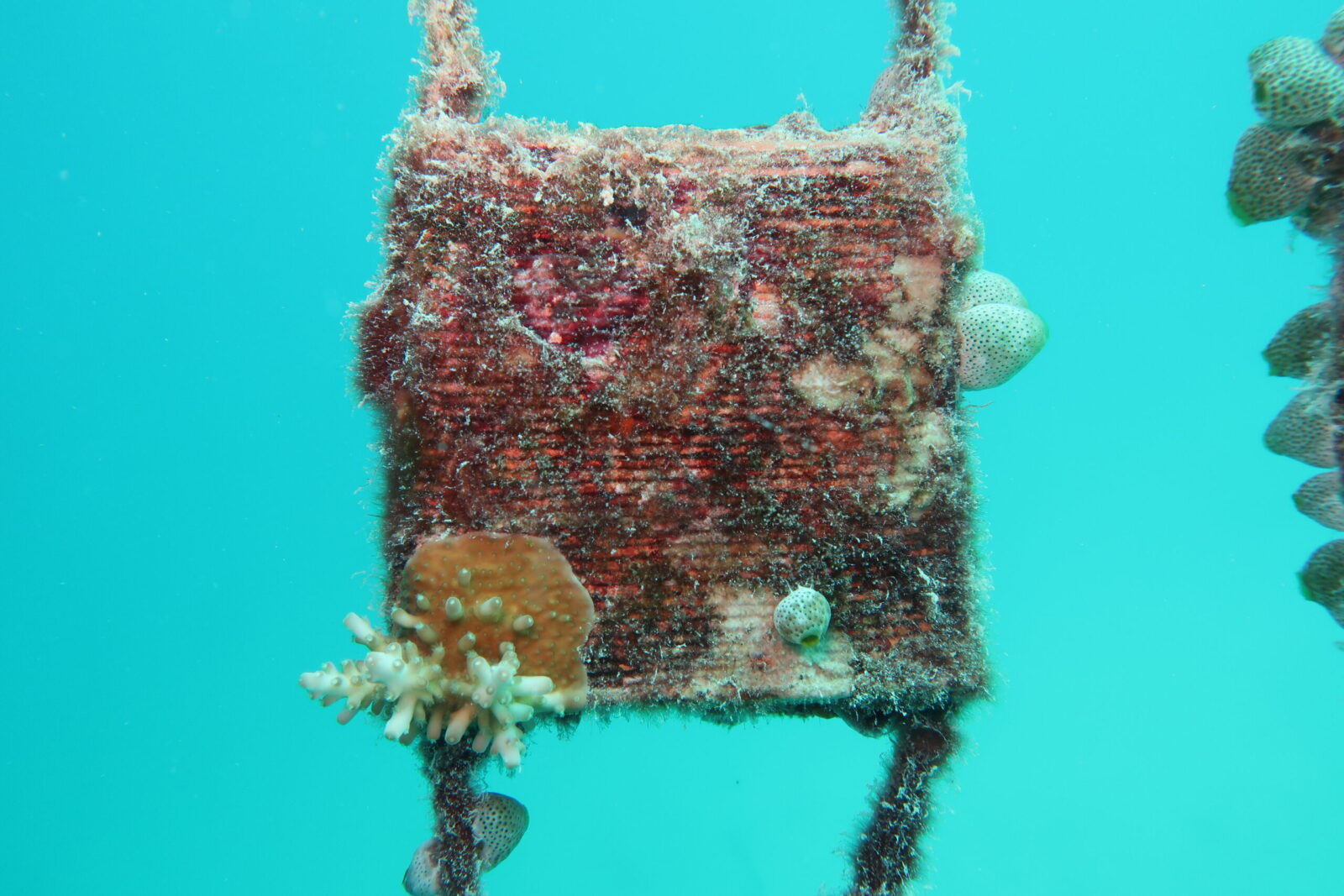
Or you can follow us to the island of San Andrés, Colombia, where we will install our first big reef in September 2021 with the NGO Corales de Paz.
Thank you for reading my story!
